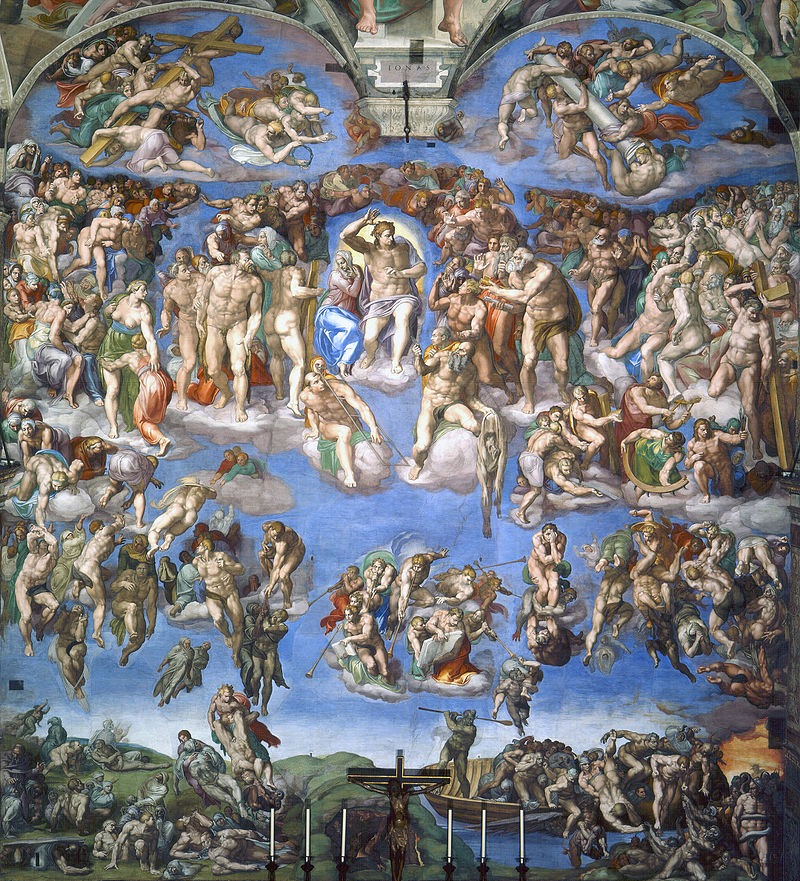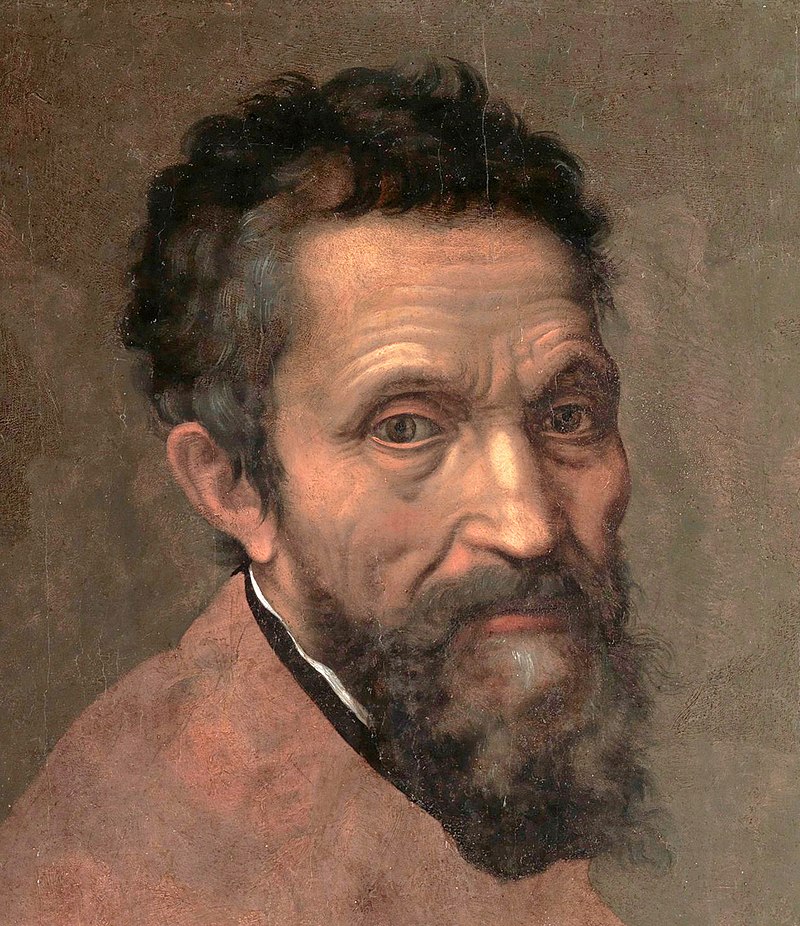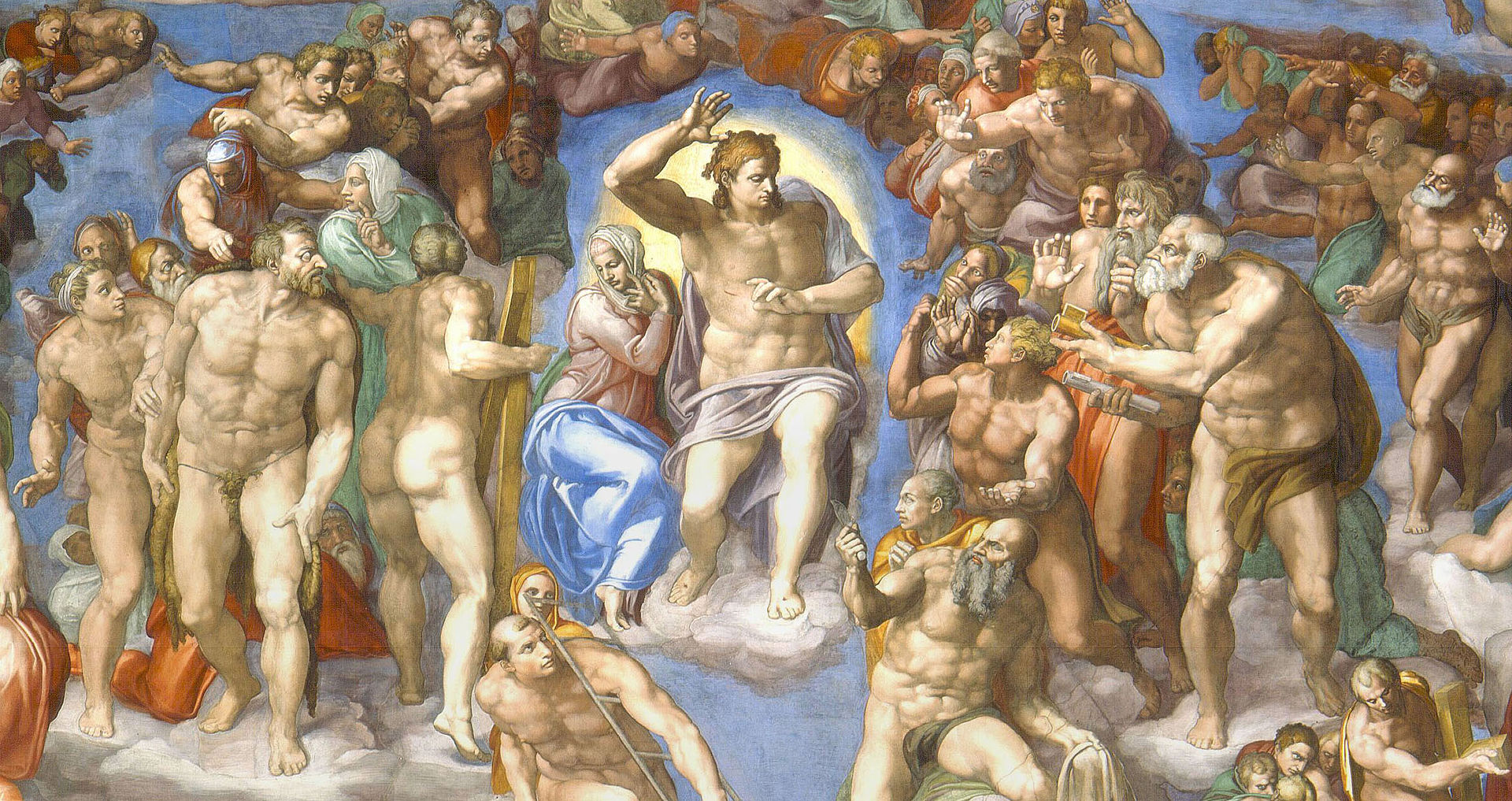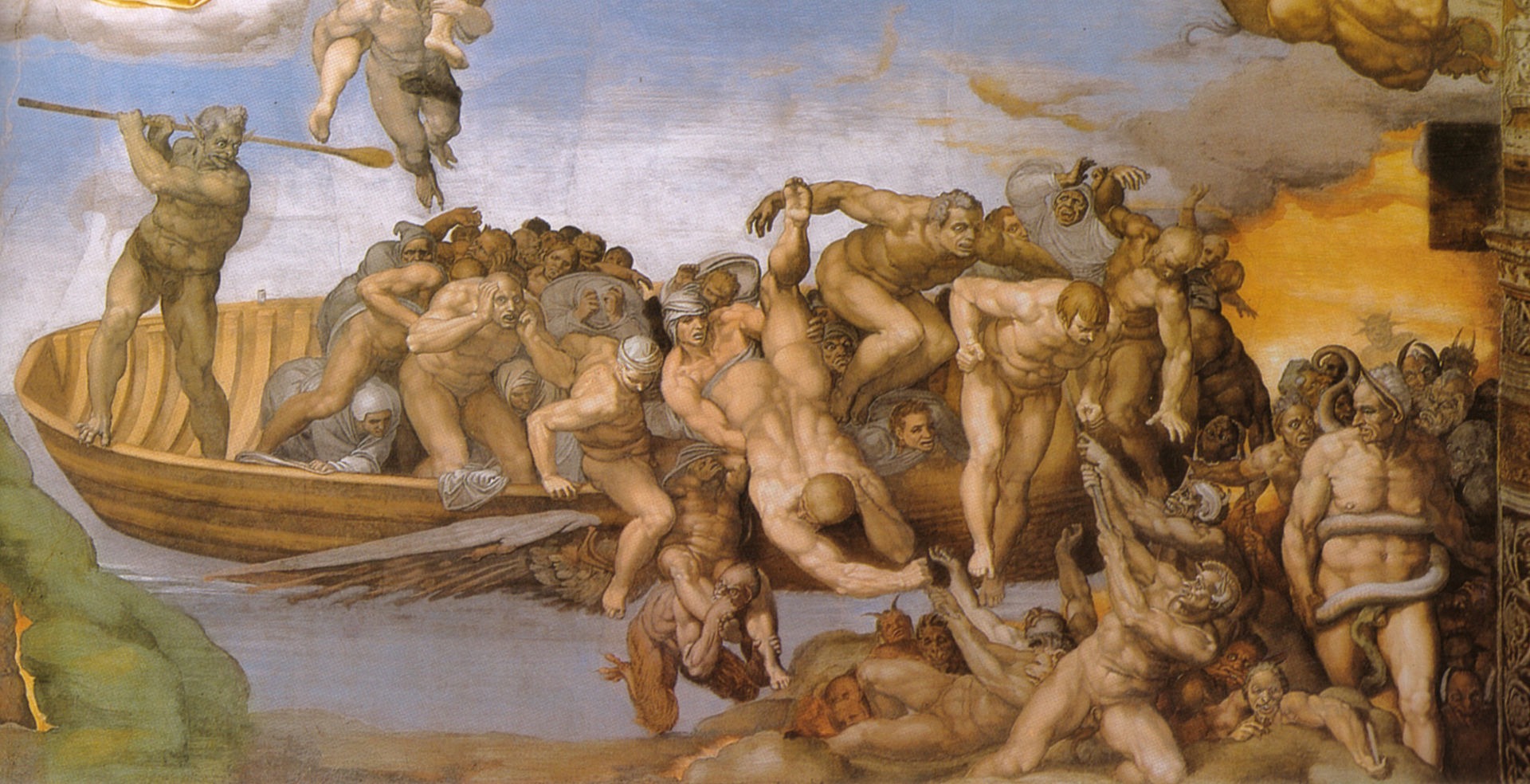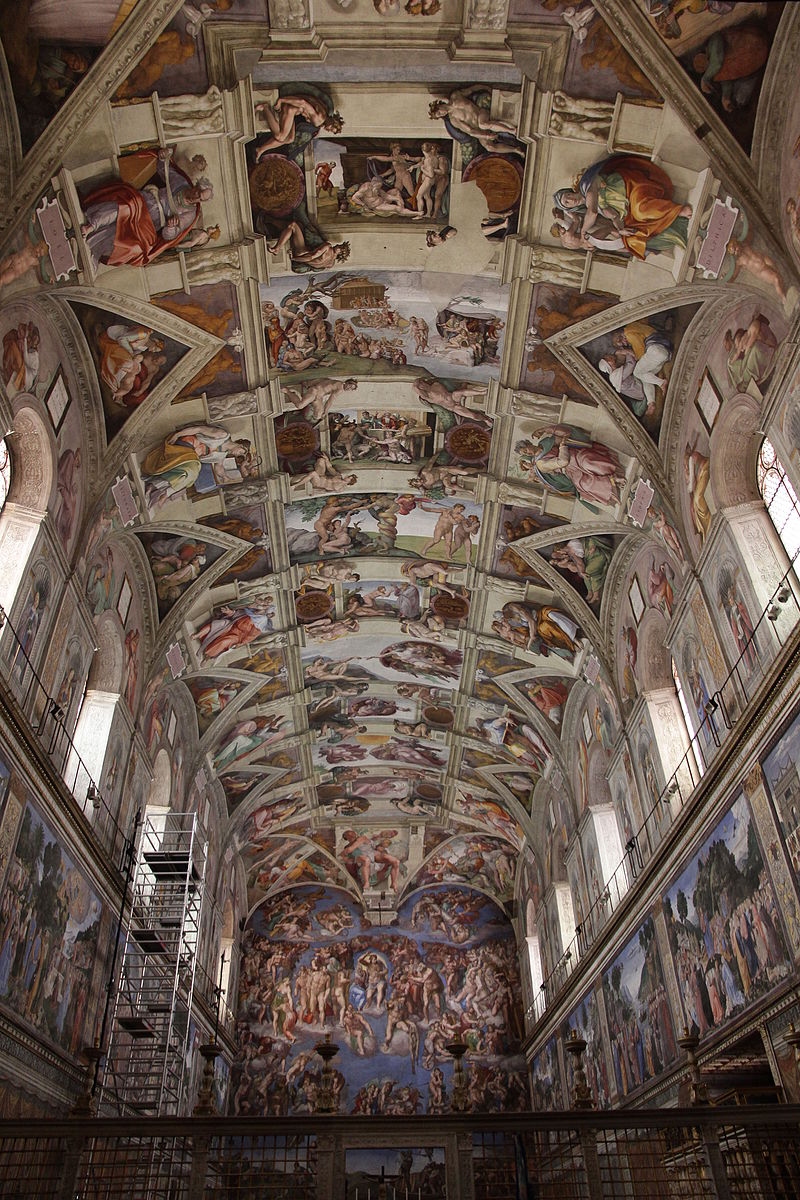Introduction
Michelangelo was one of the greatest painters who ever lived, and he left behind a large number of works that are considered to be masterpieces. This multi-talented artist of the Italian Renaissance was a poet, painter, and sculptor, and his work has indelibly etched itself into the annals of art history. The Sistine Chapel, which is housed within the Vatican in Italy and serves as the official chapel of the Pope, is home to several of Michelangelo’s most renowned works.
When we think of the Sistine Chapel, the first thing that probably comes to mind is the beautiful ceiling painting that was painted by Michelangelo. This fresco depicts episodes from the Book of Genesis in the Bible. However, within the same room is another one of Michelangelo’s works that is just as outstanding in terms of its creative accomplishment.
The Last Judgment is a dramatic fresco that was created some decades later and covers the full altar wall. It depicts angels and demons in battle against each other. The painting, which Michelangelo did after he had reached the pinnacle of his artistic maturity, created an immediate impression and stoked controversy as soon as it was completed.
Michelangelo took on the theme of the final judgment of mankind, which was not unusual for an artist to take during the Renaissance; nonetheless, he made it his own by employing a technique that was both admired and criticized. Let’s look more in-depth at this legendary fresco’s history and learn more about how The Remain Judgment has created an influence that will remain for generations.
Who is Michael Angelo?
Michelangelo di Lodovico Buonarroti Simoni, better known as Michelangelo, was a sculptor, architect, and painter during the High Renaissance and Mannerism art periods. Among the greats like Leonardo da Vinci, he was regarded as one of the best artists. During the 1400s, he was born in the Tuscan town of Caprese. Michelangelo liked art from a young age and would copy paintings in cathedrals. He attended the Platonic Academy in Florence and apprenticed under Lorenzo de Medici. He mostly worked in marble and is best known for his sculptures David (1501–1504) and Pietà (1498–1499).
About the Last Judgement Painting
- The scene of the final judgment, which will take place in front of Christ, is portrayed in the picture titled “Last Judgment,” which shows the end of the world. This piece of art captures the excellence of the figures as well as the exceptional roundness of the contours. The painting represents a significant divergence from the more conventional portrayals of the Day of Judgment.
- During the period of the Middle Ages, characters were costumed by their roles. Michelangelo, on the other hand, pioneered a ground-breaking new idea in which he depicted all of the figures equalized in their nakedness, notwithstanding the ranks and hierarchies that existed between them. The artist depicted male nudities spinning and soaring in the azure sky with their exposed chests. The artwork demonstrates Michelangelo’s outstanding artistic abilities, as it shows him imagining different poses for portraits and then effectively executing them.
- Michelangelo had complete control over the human form, and his ability to create figures that were unique astounded onlookers with his skill, perfection, and originality. Christ, who is depicted in this masterwork to be robust and powerful, serves as the focal point of the piece.
- Christ is the focal point of the entire artwork, which depicts those who have been saved joyful and reveling in joy while those who have been condemned are led away into the underworld in darkness. Christ is lowering those who are going to hell with his right hand, while at the same time, he is lifting those who are going to heaven with his left hand. The tones that represent flesh and the sky predominate throughout the entire fresco.
- On one of the panels, the Holy Virgin Mary is depicted dozing off at her son’s feet. Important figures from mythology, like Charon, Minos, and Saint Bartholomew, are depicted in the picture. The painting depicts Charon, the guardian of the entrance to the river Styx, bringing the souls of the damned down to the mouth of hell. The eyes of Charon were painted with an ember hue by Michelangelo, and the artist painted Minos, the king of Hell, on the right-hand side of the bottom of the painting.
- Minos is restrained by a serpent that is wrapped firmly about his torso. This masterwork illustrates the horrible contrasts by placing the glorious freedom of figures on one end of the picture and torturous souls on the other end, which gives the painting a frightening appeal. The artist was able to successfully engage spectators by producing extremely imaginative scenes that represent both terrors and hope in The Last Judgment, which dealt with a particularly thought-provoking subject.
History of the Last Judgement by Michael Angelo
- It would take Michelangelo another 25 years before he would return to Rome and work on the Sistine Chapel. After a lengthy and fruitful career working for the Medici family in Florence, the artist was recruited to participate in the project. Michelangelo jumped at the opportunity to move back to Rome after the Medici family went through a turbulent era in which they were first deposed and then reinstated to power.
- When he arrived, Pope Clement VII greeted him and gave the artist a commission to paint a new fresco on the altar wall of the Sistine Chapel. Pope Clement VII’s commission is still visible today. Unfortunately, the Pope would pass away not long after handing out the commission; nevertheless, his successor, Pope Paul III, would see to it that the job was completed successfully.
- Because the Papacy was recovering from the Sack of Rome at the time, this activity would have been of utmost significance to the institution. The city of Rome was reduced to ruins as a result of the events that took place in 1527 when the forces of Holy Roman Emperor Charles V pillaged the city. Martin Luther and the Protestant Reformation contributed to the problem inside the church because they were strongly critical of the abuses that were taking place within the Catholic church. Michelangelo began working on the project in 1534, and it was completed when he was 67 years old in 1541.
- The Sistine Chapel may be found within the Apostolic Palace in Vatican City, which is located in Rome, Italy. It is not only because the Apostolic Palace is the home of the Pope and the Papal Conclave, when the new Pope is elected, but also because the Sistine Chapel is home to some of the best pieces of artwork ever created in the history of Western art. Therefore, it is considered to be one of the most famous structures in the world.
- In addition, the Catholic Church and Rome wanted to rebuild themselves following the damage caused by the Sack, and one of the most effective ways to do this was through the medium of art. The message that the Pope wanted to express through the painting of The Last Judgment was practically the same as taking a stance against all of the events that had taken place against the Papacy.
- The prophetic narrative of Christ’s Second Coming and the idea of Hell and torment portrayed in the hundreds of human bodies pictured on the wall would be unable to be avoided by anyone who visited the chapel because they would be forced to meet face-to-face with the painting. It was almost like a reminder about justice against the criminals, which in this case were the army that ransacked the city of Rome and held it, hostage. This was an understandable goal on the part of the Pope and employing the message of painting was the most effective approach to teach and interact with people, particularly those who engaged in violent acts against the Church.
The Last Judgement’s Composition
The painting “The Last Judgment” by Michelangelo is widely regarded as one of the most potent depictions of this scene in the annals of Christian art. The wall is covered from edge to edge with almost three hundred strong people shown in an endless variety of active attitudes. In contrast to the scenes that are painted on the walls and ceiling, the Last Judgment does not have a border that is painted around it.
It encompasses everything and extends further than what can be seen by the viewer at any given time. In contrast to other sacred narratives, which focus on depicting things that happened in the past, this one involves the reader or viewer. There is yet time for it to take place, and when it does, the viewer will be among those whose destinies are decided.
The composition is neatly ordered into tiers and quadrants, with subgroups and meaningful pairings that enhance the fresco’s intelligibility. This is despite the high number of figures that are included in the design. When viewed as a whole, it slopes upward on the left and downward on the right, which is reminiscent of the scales that are used for the weighing of souls in various portrayals of the Last Judgment.
- Company of Christ
Christ serves as the pivotal point in this intricate structure. He steps forward with a twisting gesture that puts in motion the last sorting of souls, placing those who will be damned on his left and those who will be blessed on his right. He is a strong and muscular figure. The Blessed Virgin Mary can be seen tucked up in the crook of his outstretched arm. Michelangelo modified her attitude from one of wide-armed pleading on humanity’s behalf that was shown in a preparatory drawing to one of resignation to Christ’s judgment. The preparatory drawing depicted her as having her arms open. The time for pleading and begging has passed. The judge has made their decision.
Immediately below Christ, a group of wingless angels on the left side, their cheeks puffed out with exertion, sound the trumpets that call the dead to rise, while two others hold open the books documenting the actions of the resurrected. The books chronicle the deeds of those who have been raised from the dead. The angel who is holding the Book of the damned tilts it in such a way as to drive home the point that the damned deserve their punishment because of the evil crimes they committed.
Even though these particulars were intended to instill fear in the viewer, Michelangelo’s picture is principally focused on the victorious return of Christ. Heaven’s domain is the most important. Christ is surrounded by the elect; they dominate the foreground and stretch far into the background of the painting, erasing the distinction between the foreground and background of the image plane.
Some people are holding the implements that were used to execute them; for example, Saint Andrew is holding an X-shaped cross, Saint Lawrence is holding a gridiron, and Saint Sebastian is holding a bundle of arrows. Particularly notable are Saints John the Baptist and Peter, who stand to Christ’s left and right respectively, and have huge proportions similar to those of Christ. Peter, the first pope, is known by the keys that he returns to Christ, while John, the last prophet, is recognizable by the camel skin that covers his groin and dangles below his legs. His time serving as the guardian of the keys to the heavenly realm has come to an end.
This action served as a striking reminder to the Pope that his reign as Christ’s vicar was only transitory because, in the end, he too will have to answer to Christ for his actions. This triumphant moment is linked to Christ’s sacrificial death by the angels who present the instruments of Christ’s Passion in the semicircular niches at the top right and left. When the priest at the altar below is remembering the sacrifice that Christ made during the liturgy of the Eucharist, this section of the wall pushes forward by one foot, allowing it to be seen by the priest.
- The Blessed or Those Elected into Heaven
The bodies of the dead can be seen rising from their graves and casting off their burial clothes on the lower left side of the composition (Christ’s right). Some ascend without effort, drawn by an unseen power, while others require the assistance of herculean angels; one of these angels pulls up a pair of souls that are clinging to a thread of rosary beads.
The fact that prayer and good acts, in addition to faith and divine grace, play a role in determining one’s fate in the hereafter is reaffirmed by this particular nuance, which is a teaching that has been questioned by Protestants. One end of the furious tug of war is being dragged by two angels, and the other end is being pulled by a horned demon who has escaped through a crack in the central mound. Directly below, a raised body is caught in the middle of the conflict. The raging inferno that can be seen through this rift in the earth is terrifying.
- Those Who Are Doomed or Those Who Will Go to Hell
On the right side of the composition, individuals who have been condemned to hell are being dragged there by demons, while on the left side of the composition, those who are attempting to escape their fate are being beaten down by angels. A single soul is being beaten by an angel and dragged head first by a demon at the same time; a money bag and two keys are dangling from his chest. The vice of covetousness characterizes him. A third soul, located far to the right, is being pulled by his scrotum since his sin was lust. Another soul, representing the sin of pride, dares to fight back, arrogantly opposing divine judgment. In sermons that were given before the papal court, these offenses received special attention and condemnation.
Charon, the ferryman from Greek mythology who takes souls to the underworld, is depicted swinging his oar as he drives the doomed onto the shores of hell in the lower right corner of the image. Another mythological character, the ass-eared Minos, may be found in the bottom right corner of the picture. His carnal depravity is represented by the snake that bites him in the genital area. He sits at the very brink of hell, evaluating those who have just arrived to decide how they will spend eternity being punished.
Dispute About the Last Judgment
The Last Judgment has been the subject of a great deal of criticism and has been known to provoke angry responses from its contemporaries. The nakedness of the figurines, particularly those depicting saints, was the source of the issue. Michelangelo’s work was singled out for criticism by Messer Biagio da Cesena. He thought it was a scandalous waste of time and talent to paint figures in the Chapel who were both nude and shameless. “Impiety of religion’” was another accusation leveled against him.
The dispute that Michelangelo’s work sparked between the worlds of art and religion was sparked by the fact that the artist took his inspiration for the fresco from the Bible and used mythological beings as models for the poses in his painting. After his passing, a few alterations were made to the artwork, one of which consisted of covering up the nakedness of the individuals in the painting. The mythological characters were not touched in any way, and they were left in their original state.
Danielle Da Volterra, one of his students, is responsible for these alterations. Between the years 1980 and 1991, the painting underwent conservation treatment. Michelangelo is credited with bringing about a religious reformation at the time, and this painting became quite popular as a result of it, even though it was severely condemned by the Roman Catholic Church. This magnificent picture is an example of one of his most accomplished works of art.
Facts About Michael Angelo’s The Last Judgement
- They refer to the skin held by St. Bartholomew, which they claim has the artist’s face on it, as evidence that Michelangelo inserted his self-portrait in his “The Last Judgement” fresco. Art historians generally agree that Michelangelo did this. One of the twelve disciples that Jesus chose, Saint Bartholomew was one of them. Later in his life, while he was serving as a missionary, he was flogged while still alive.
- Michelangelo included figures from Greek mythology in his Christian-inspired work “The Last Judgement,” as had been done by other artists of the Renaissance before him. The likes of Jesus, Mary, saints, and angels share wall space with mythical figures such as Charon and Minos of Crete, who according to Dante’s “Inferno” served as one of a trio of judges in Hades. Charon was said to row souls down the river Styx to Hades, and Minos of Crete was said to be one of the judges in Hades.
- After Biagio de Cesena, a dignitary in the Vatican, voiced his disapproval of the unfinished painting, the artist is said to have shown him as Minos with a serpent around his neck in one of the legends that surround the fresco. Cesena asserted that “The Last Judgement” was unsuitable for the Sistine Chapel because the majority of the persons depicted in the painting were naked. Recent cleaning of the fresco has revealed an interesting detail: a serpent biting Minos in the vaginal area.
- A few short weeks before Michelangelo passed away, scandalized churchmen at the Council of Trent agreed to hire the artist Daniele da Volterra to dress the naked figures in the painting that Michelangelo had painted.
- Approximately 25,000 people visit the Sistine Chapel every day to view the painting known as “The Last Judgement.”
- The Last Judgement, painted by Michael Angelo, was enormous, reaching approximately 39 feet by 45 feet when it was finished. In comparison, the dimensions of Leonardo da Vinci’s fresco of “The Last Supper” were around 15 by 29 feet.
- Michelangelo took certain creative liberties with the biblical account, like depicting Christ without a beard, leaving out Christ’s throne, and depicting a host of winged angels without their wings in one of his works. After the death of the artist, Giovanni Andrea Gillio compiled all of Michelangelo’s departures from the biblical tradition into a book named “Due Dialogi.” This was done shortly after the artist’s passing.
- Other previous pieces of art, such as “The Assumption of Mary” by Renaissance artist Pietro Perugino and two of Michelangelo’s own earlier works, the “Ancestors of Christ” lunettes, had to be destroyed to create room for “The Last Judgement.” The fresco also covered sections of “Adoration of the Kings” and “Moses” by Perugino, both of which are cycles of paintings.
- One school of thought suggests that the falling figures in “The Last Judgement” may refer to the seven deadly sins. As an illustration of greed, for instance, one of the falling figures is carrying keys and coins.
- Christ and Mary, who are depicted in the center of the fresco, are surrounded by a golden aura, which may be a reference to Apollo, the Greek deity of the sun. Additionally, Christ’s revolving arms may be a reference to the circular motion of the sky as well as the cycle of life, death, and resurrection.
Conclusion
Michelangelo is credited with bringing about a religious reformation at the time, and this painting became quite popular as a result of it, even though it was severely condemned by the Roman Catholic Church. This magnificent picture is an example of one of his most accomplished works of art.

